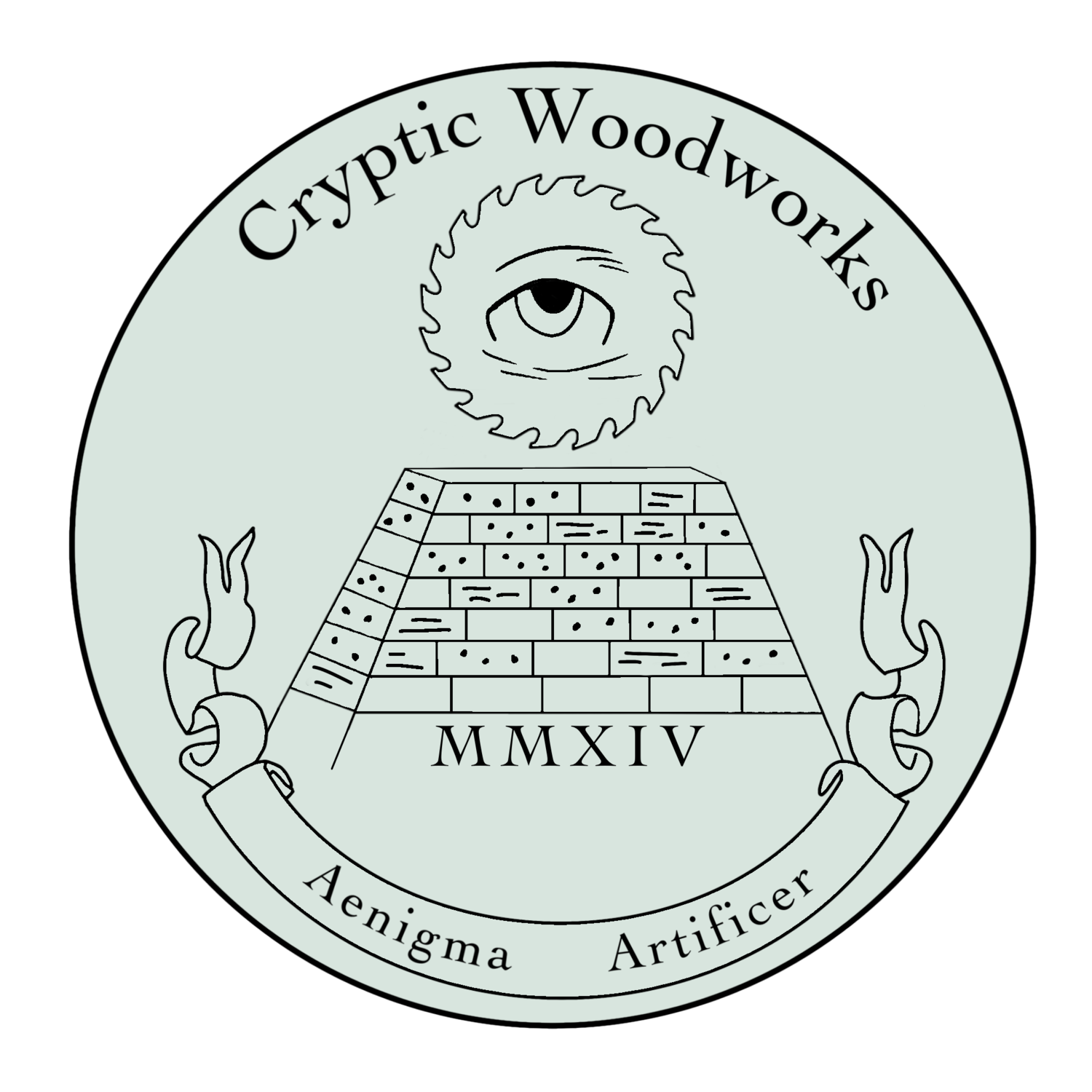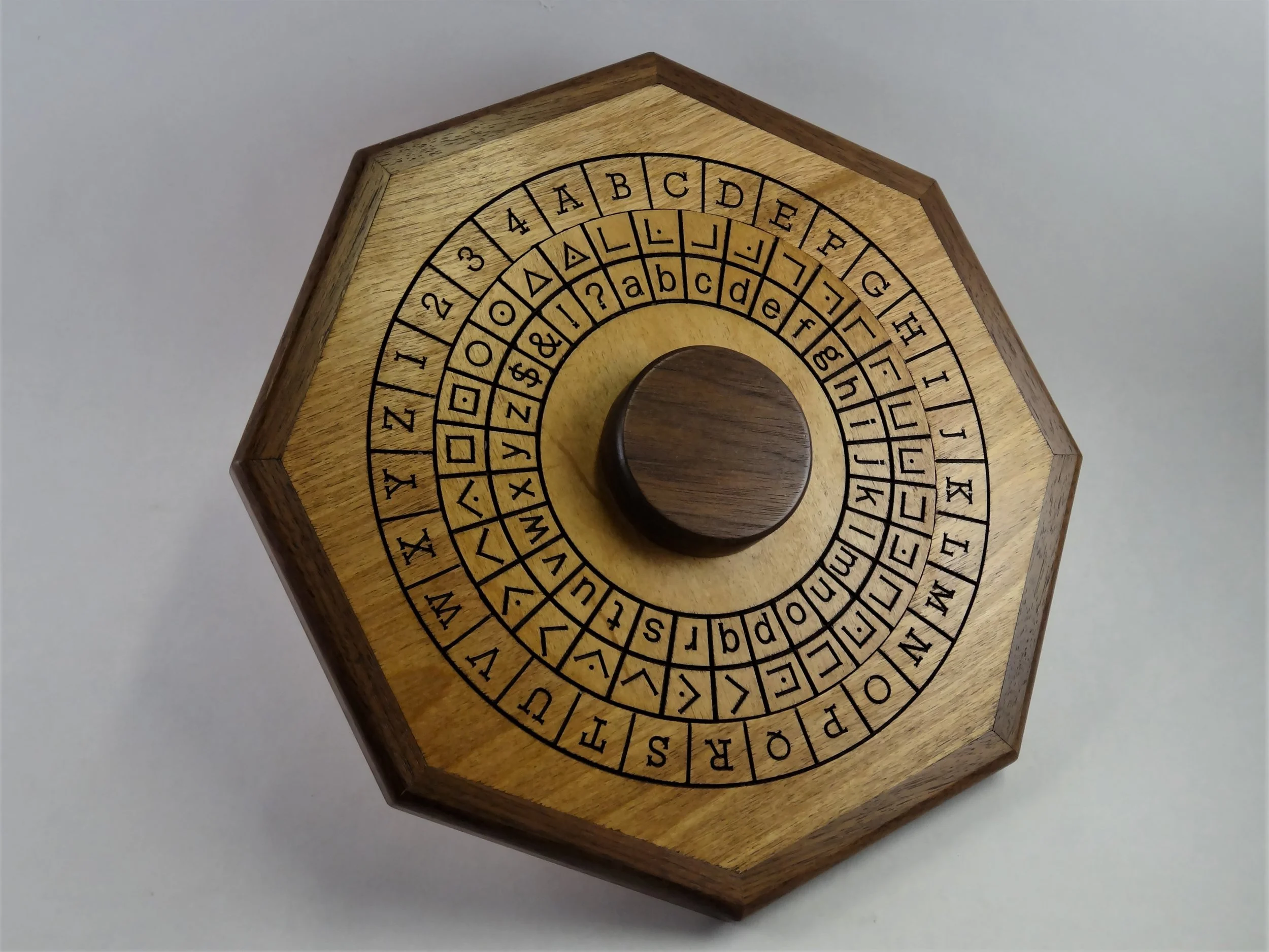The easiest form of cipher to create (and unfortunately the easiest to crack) is the basic shift cipher. This is called a shift cipher as it simply shifts the cipher text alphabet under the plain text some number of characters.
On any of my cipher wheels, you would simply say that the key is the capital A (on the outer ring) equals lowercase g (on the inner ring), set the cipher wheel to that then look up each plain text value on the outer ring and write down it's match on the inner ring. Of course you can use any combination of plain text value to cipher text value as your key. The only important part is that the recipient of the code knows the key, or the key is embedded in the code.
If you embed the key in the code, you could have an accepted rule that the decoder knows such as "the first two letter are always the plain text/cipher text key", or use the last two letters, or letters 5 and 6. It's up to your imagination.
To decode this, the solver would take their cipher wheel, and it has to be the same type of wheel the cipher was created on, set the wheel to the key, then look up each cipher text letter on the inner ring and write down it's plain text match.
A sample
If I'm creating a code with the same type of cipher wheel in the video below and I want to use the key setting of Ag, an encoded message would look like this:
MEETING AT NOON
agskkzotmgztuut
Notice that the first two characters in the cipher text are ag. This is what the decoder would set their wheel to when retrieving the message. We could have placed this elsewhere in the cipher text, so long as the decoder knows where to look. Or, if the decoder already knows the key, we could have excluded it completely.
Cipher text usually always removes spaces, too. This gives someone trying to crack the code one more hurdle.
The weakness of this cipher is that using an English alphabet there are only 25 combinations (26 letters in the English alphabet minus the actual proper one) for each cipher text value. And the shift never changes. So, a code breaker could rather easily use a brute force approach and try all 25 combinations. They may only need to try it on a few words, once a couple work out then they know the shift to use for the rest.
A breaker can also use a technique called frequency analysis - each letter in the English alphabet has a frequency of usage, or likeliness to show up. E, R, S, T are all fairly common, so if you see an often repeated cipher text letter it's probably one of these. Again, once you figure out a single word you'll know the shift and the rest are easy. In the sample above, the two "E" letters are always coded "k", "N" is always "t" and "O" is "u". Especially when the letters are repeated next to each other, it makes cracking that much easier.
This code's simplicity and ease of breaking doesn't mean it isn't fun. It's a great way to introduce young children or those new to ciphers to the techniques. If you were designing an escape room puzzle, you might want something that doesn't take hours or months to solve so the ease here may be a benefit.
Here is a video showing how to create and decode a shift cipher.

